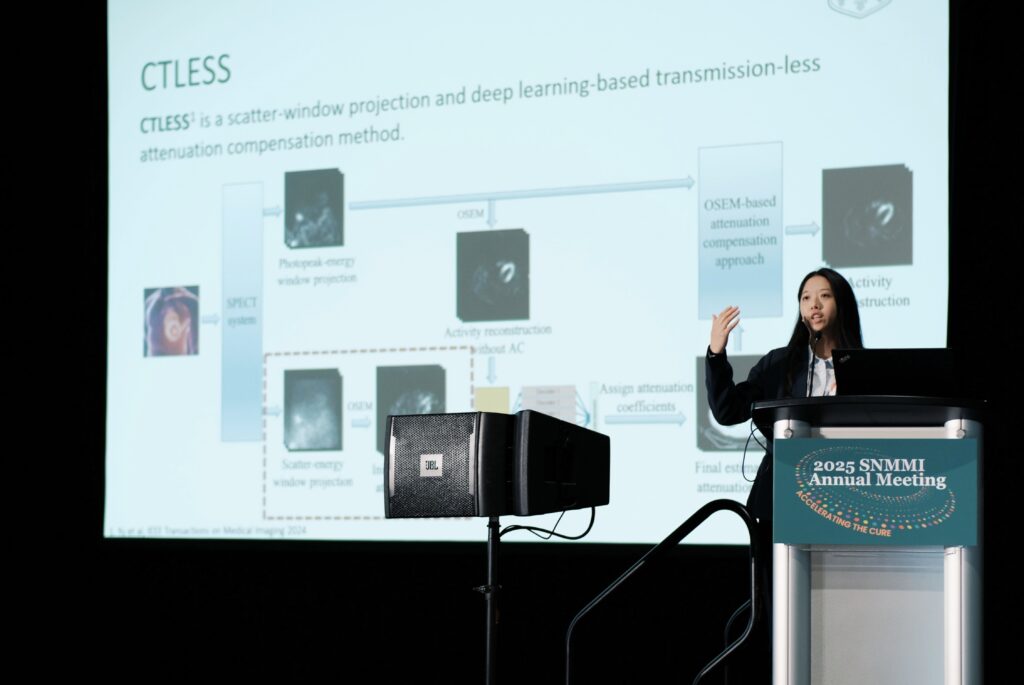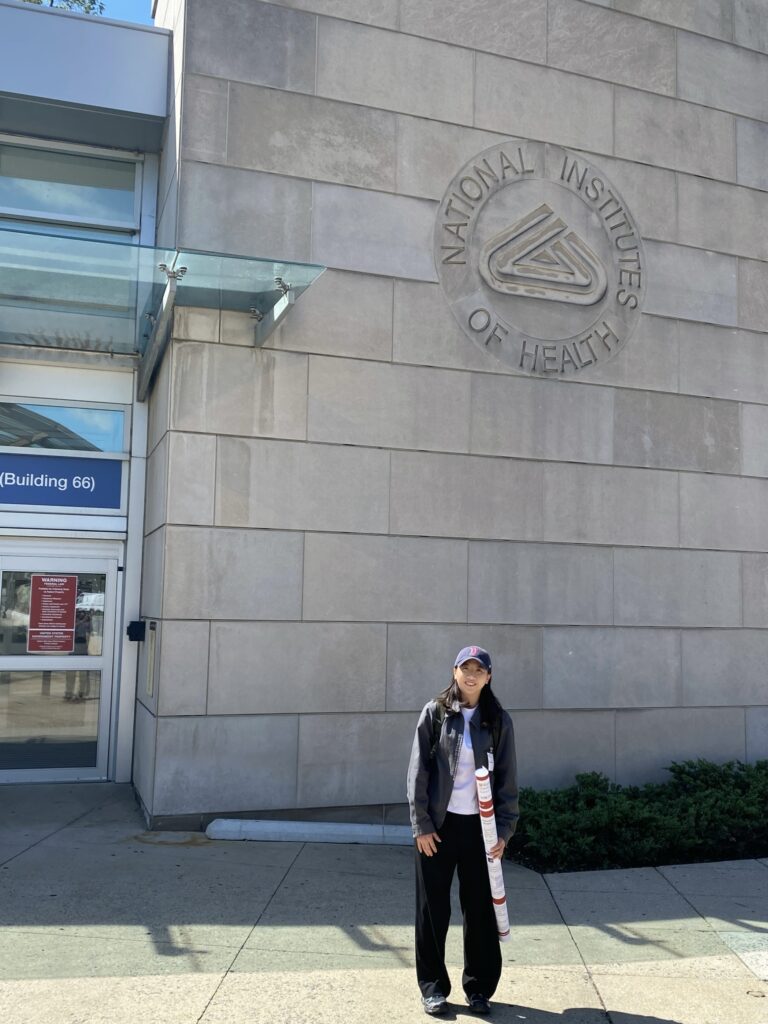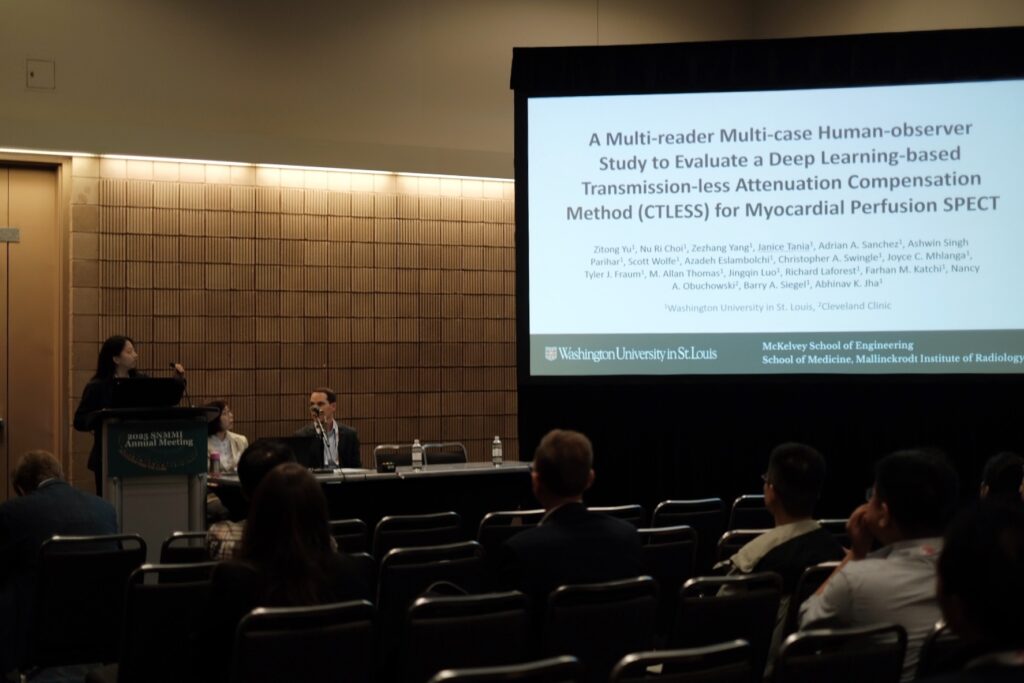Janice embarked on her academic journey at National Taiwan University, where she earned her Bachelor of Science in Engineering with a concentration in biomedical engineering in 2024.
Throughout her time at university, Janice developed a keen interest in biomedical engineering research, particularly focusing on image processing and the practical applications of artificial intelligence in medical imaging. She took on a summer internship at Washington University in St. Louis, where she contributed to a project developing a new method for improving SPECT imaging without the need for CT scans.
Now admitted to the McKelvey School of Engineering and the McDonnell Scholars Academy, Janice hopes to fulfill her research goals that may someday contribute to the healthcare of her country, Indonesia, and other parts of the world that need it.
Outside of her studies and research, Janice enjoys exploring new places and capturing moments through photography. Her experiences studying abroad in Sweden and her love for travel have shaped her perspective and fueled her curiosity about the world.
Scholar Voices
Global Leadership Vision Op-Ed | The Tax of Living Fast: How Cognitive Fatigue Shapes Society
By Janice Tania | November 2025

Before our day begins, our minds are already mid-sprint, filtering notifications, weighing priorities, and building mental checklists. Society rewards constant alertness, but our brains were never built to live in a state of overstimulation.
In an age where attention is the rarest currency, cognitive fatigue has quietly become the tax we pay for living fast.Nobel laureate Herbert Simon once wrote “A wealth of information creates a poverty of attention.” (Simon, 1971) Half a century later, we are living inside his prophecy. Our days are shaped by constant choice, continuous media engagement, and the pressure to maximize output. Consequentially, cognitive energy has become the most valuable, yet the most depleted resource of the modern world. Cognitive fatigue runs deeper than distraction; it is the byproduct of a culture that romanticizes busyness and mistakes speed for satisfactory progress. Our minds were never designed to process at this pace, and we are all exhausted.
Cognitive fatigue is more than feeling tired. It is the residue of sustained mental effort and sensory overload. Studies show that prolonged cognitive work alters brain chemistry, leading to glutamate buildup in the lateral prefrontal cortex and reduced control over decision-making (Wiehler et al., 2022). Neuroimaging research also finds that extended mental strain reduces activation in regions responsible for interference control, weakening our ability to resist distraction (Persson et al., 2013). As self-control wanes, we seek easy rewards, constant stimulation, and quick wins instead of investing attention in slower, more meaningful tasks that are beneficial long-term.
Some may argue that this fast-paced environment is essential for modern leadership. Rapid communication and multitasking, they say, allow leaders to stay agile and respond to global challenges in real time. But constant speed without reflection leads to exhaustion instead of healthy efficiency. Cognitive fatigue erodes the very abilities that make good leaders: clarity, empathy, and foresight.
What we truly need is “AI”: not artificial intelligence, but Awareness and Intentionality. Awareness helps us recognize when we are drifting through noise; Intentionality invites us to reclaim how we spend our attention. Together, they form a quiet rebellion against mindless acceleration.
The consequences of cognitive fatigue reach far beyond individuals; it has become a widespread state of mind. It shapes how our society thinks and acts, often valuing immediacy over depth. To move forward, we must reclaim the ability to think slowly, choose deliberately, and act with intention. The future will not be built by those who move fastest, but by those who move with purpose.
Advancing Cardiac Imaging: Janice Tania Presents Research at SNMMI and NIH Workshops
By Janice Tania | September 2025

Janice Tania recently presented cardiac SPECT research at The Society of Nuclear Medicine and Molecular Imaging (SNMMI) Annual Conference in New Orleans held from June 21-24 and the National Institutes of Health (NIH) Emerging Technologies for Coronary Artery Disease Imaging Workshop in Washington, DC. held from September 17-18.


At the SNMMI conference, Janice gave three oral presentations. In the Generative AI session, she presented an LLM-based framework for extracting population-based statistics of myocardial perfusion defect properties from MPI SPECT clinical reports to strengthen the clinical realism of virtual imaging trials and task-specific evaluation methods. In the Image Generation session, she shared findings from a multi-reader multi-case human observer study evaluating CTLESS, a scatter projection and deep learning–based attenuation compensation method. In the AI Showcase session, she introduced CTLESS to a broader audience, highlighting its motivation, evaluation, and potential for thoughtful integration into clinical practice. At the NIH CAD Workshop, Janice delivered a poster presentation highlighting the lab’s comprehensive work to advance myocardial perfusion SPECT imaging, including the development of personalized acquisition protocols, methods to reduce radiation dose and acquisition time, and the physics-informed and deep learning-based method for accessible attenuation compensation.
